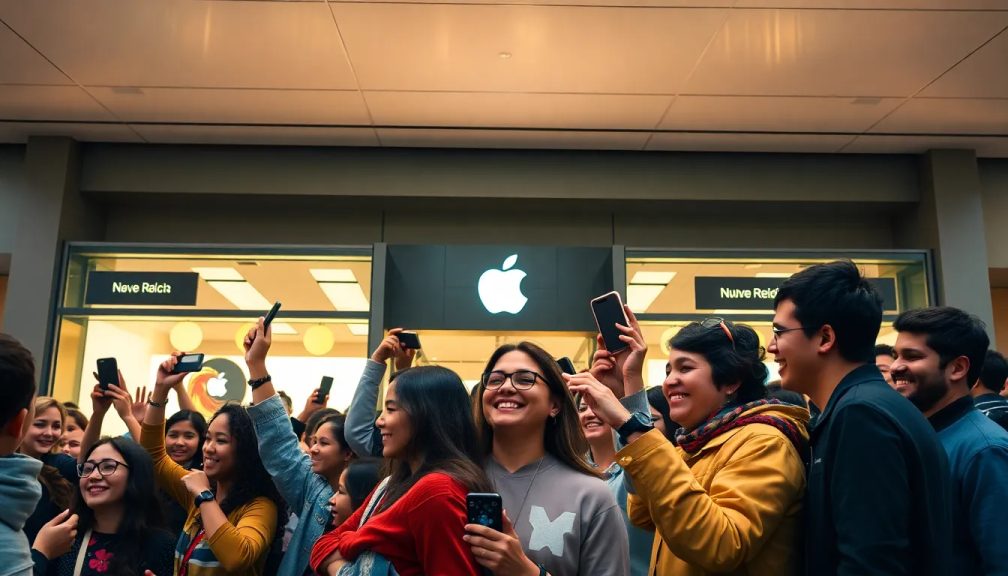Apple Watch Receives Nearly 1 Million Pre-Orders First Day

In a digital landscape increasingly dominated by wearable technology, the Apple Watch has emerged as a significant player. The excitement surrounding its release has translated into impressive pre-order numbers, signaling strong consumer interest. What factors contribute to this enthusiasm for Apple's latest innovation, and what do these numbers reveal about consumer preferences in the smartwatch market? Let’s dive into the details.
Apple Watch pre-orders soar to nearly 1 million
According to data from Slice Intelligence, a company specializing in digital commerce analytics, the Apple Watch has seen remarkable initial demand. On its first day of availability for pre-order, close to 1 million units were ordered by consumers in the United States. Specifically, the report indicated that approximately 957,000</strong people had pre-ordered the smartwatch as of Friday, a figure collected from e-receipt data.
Each consumer on average ordered about 1.3 watches, spending around $508.83 per unit. This financial commitment underlines the watch's strong market positioning, despite being a new entrant in a competitive field.
Consumer spending patterns reveal insights
The spending habits observed during the pre-orders provide fascinating insights into consumer behaviors. Those opting for the Apple Watch Sport averaged a purchase price of $382.83 per unit. In contrast, customers who chose the standard Apple Watch spent about $707.04. Notably, the premium Apple Watch Edition was not included in the pre-order figures, leaving us curious about its reception.
Additionally, many consumers sought to personalize their devices by exploring affordable Apple Watch bands, allowing them to enhance their style without significantly increasing overall costs.
Apple Watch configurations and consumer preferences
The Apple Watch is available in two sizes: 38mm and 42mm. In terms of size preference, a significant 71% of consumers opted for the larger model. When it comes to color choices:
- Space Gray aluminum: 40% of buyers selected this option.
- Stainless steel: 43% favored this sleek choice.
Moreover, the Black Sport band emerged as the favorite, chosen by 49% of consumers, highlighting a trend toward minimalistic yet functional design in wearable technology.
Market implications of high pre-order numbers
The substantial pre-order figures for the Apple Watch suggest that it is poised to become a must-have tech accessory in 2015. This phenomenon can be attributed to several factors:
- Brand loyalty: Apple has a robust customer base that remains faithful to its product ecosystem.
- Innovative features: The watch includes health tracking, fitness monitoring, and seamless integration with iOS devices, making it highly appealing.
- Fashion statement: The Apple Watch is not just a gadget; it’s a fashionable accessory that resonates with the style-conscious consumer.
This convergence of technology and fashion is crucial in understanding the device's appeal. As smartwatches evolve, their role as both functional gadgets and style statements will likely grow.
What does the future hold for Apple Watch sales?
While the initial pre-order success is promising, it raises questions about the sustainability of these sales figures. Will Apple manage to maintain this momentum, or are there potential pitfalls ahead? Analysts will be closely monitoring several factors that could influence future sales:
- Consumer reviews: Positive user experiences will drive further interest.
- Competition: Other brands will likely respond with their own innovations, impacting Apple's market share.
- Product updates: Ongoing enhancements and new features will be essential in keeping the product relevant.
As time progresses, the Apple Watch's performance in the market will be influenced by Apple's ability to adapt to consumer needs and technological advancements.
Comparative analysis with other smartwatches
To better understand the Apple Watch's position in the marketplace, it’s essential to compare it with other leading smartwatches. Here’s a brief overview of how it stacks up against competitors:
| Smartwatch | Average Price | Key Features | Market Share |
|---|---|---|---|
| Apple Watch | $508.83 | Health tracking, fitness apps, iOS integration | Approximately 50% |
| Samsung Galaxy Watch | $350 | Health metrics, customizable watch faces, Android integration | Approximately 20% |
| Fitbit Versa | $200 | Fitness tracking, heart rate monitoring, sleep tracking | Approximately 15% |
This table illustrates that while the Apple Watch commands a higher price point, its integration with the Apple ecosystem and premium features justify its positioning as a top-tier device.
In conclusion, the Apple Watch's initial pre-order success reflects a strong consumer interest that could signify a shift in how wearables are perceived in the tech market. As Apple continues to innovate, it will be crucial to watch how this trend evolves and shapes the future of wearable technology.
For a deeper look into the launch of the Apple Watch, check out this insightful video:




Leave a Reply